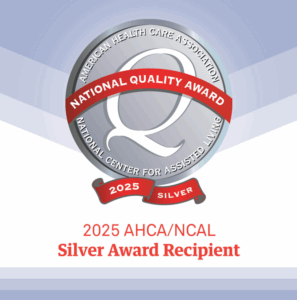Did you know that by the time we are 20 years old, we’ve built up around 90% of all the bone we’ll ever have? Our bones continue to build until around age 25 or 30, which is when we’ve reached what is known as “peak bone mass”. After age 30, the rate at which our bones grow slows down, while the rate of bone loss begins to pick up.
Once bone loss has occurred, it’s not possible to get it back. However, there are certain steps you can take to ensure you’re reducing the amount of bone mass you lose, which puts you at greater risk for osteoporosis.
How to Build Strong Bones in the Elderly
According to the National Osteoporosis Foundation, 10 million Americans currently have osteoporosis, and another 34 million are estimated to have low bone density which can lead to osteoporosis in the future. Leading a healthy lifestyle through proper diet and daily exercise is key to reducing your risk for osteoporosis. Prevention is entirely possible when it comes to osteoporosis!
Building Strong Bones through Proper Nutrition
Our bodies need three key elements to build stronger bones: calcium, vitamin D and protein. The collagen in our bones is bound together by calcium and other trace minerals, and vitamin D helps our bodies better absorb calcium. Most adults should get between 600 and 800 international units of vitamin D every day and between 1,000 to 1,300 milligrams of calcium daily.
Adding calcium-rich foods to our diet is actually fairly easy. Calcium can be found in plenty of dairy products, like milk, cheese and yogurt. You can also find calcium in foods like oatmeal and cereals, dark leafy greens like broccoli and certain nuts, just to name a few. If you still aren’t getting enough calcium through your food choices, you can take a calcium citrate supplement.
Vitamin D can be trickier to get naturally, especially for those of us living in the more northern states. This is because our bodies synthesize vitamin D in response to sunlight. Vitamin D supplements of 400 IU can help with calcium absorption when you’re not able to get around 15 minutes of sunlight every day.
Lastly, adding protein-rich foods can also help build strong bones. Look for lean protein choices in fish, beans, cheese and lean meats.
Exercise for Osteoporosis Prevention
Adding in daily exercise is also key to building stronger bones and preventing osteoporosis. Two types of exercise for osteoporosis prevention in particular are weight-bearing exercises and muscle-strengthening exercises.
Studies show that weight-bearing exercises can build about 1-3% of bone. While this doesn’t sound like much, research shows that women who walk four hours per week can reduce their risk of hip fracture by as much as 40%! Walking, jogging, dancing, hiking, tennis, stair climbing, and jumping rope are all examples of high-impact weight-bearing exercises. If you are more at risk for breaking a bone, low-impact weight-bearing exercises like using elliptical machines or walking on a treadmill are safer activities.
As far as muscle-strengthening exercises, you can lift weights or use weight machines, do yoga or Pilates, or do functional movements like standing and rising up on your toes. Whatever exercise you choose to participate in, just make sure you are continuing to challenge yourself by adding more time and intensity to your workouts as you build stamina.
Just being physically active in general can have numerous benefits for your bones and your overall health.
For more information about building stronger bones through the New Energy Wellness program at American Senior Communities, please visit www.ASCSeniorCare.com/new.




